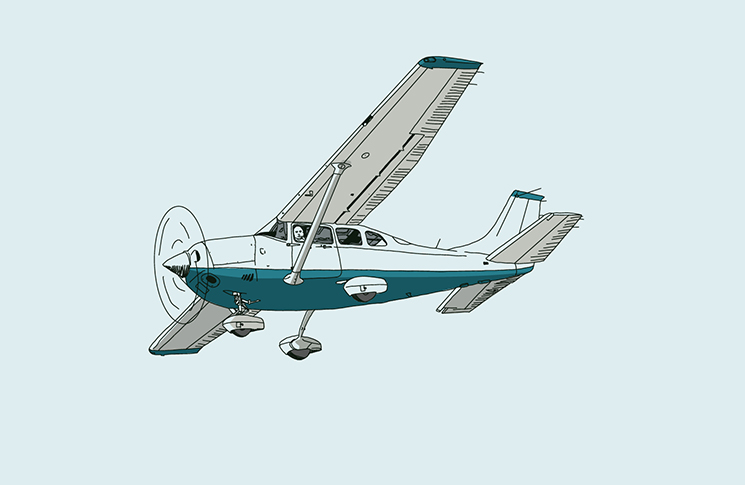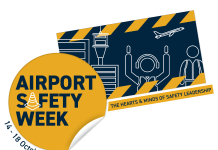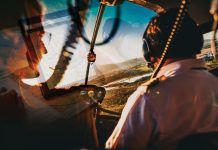These 5 simple tips will help you fly safely in uncontrolled airspace.
Watching a feature film about how to safely and legally fly in non-controlled airspace could take a month. Bursting with high-octane enthusiasm, the pilots in command will display the full gamut of flying skills, ranging from seriously proficient to very seriously not.
Operating in controlled airspace is defined; it’s legislated; ATC calls the shots and we comply. Easy. But let us loose outside the boundaries (OCTA), the curtain rises and, batten down the hatches, here comes Jesse James and Calamity Jane.
But just because the shackles are off, it doesn’t mean that mayhem reigns. CASA and Airservices have, in my opinion, laid out a workable, easy-to-understand regime for us to follow when flying OCTA. We all just need to stick to the rules, and it works because we know what others are doing and what to expect.
Australia hands us a grand canvas for light aircraft flying. Once you get past the busy controlled airspace that defines a lot of our frankly gorgeous seaboard, there’s a whole lot of beautiful Class G and E airspace for us to use, handing us our passport into the best of regional and outback Australia.
I like to keep things simple. If you get these 5 disciplines stamped into your routine when flying OCTA, you’ll go a long way towards making our skies safer, and filling that logbook with irreplaceable memories.
1. Get the circuit right
You’re going to have to land at some point. While a lot of non-controlled aerodromes may seem quiet, many of them are used by medivac, charter, agricultural and RPT operators, so there’s always the potential for substantial and varied traffic, often using different runways.
There’s also the possibility you may be the only aircraft in the circuit. Big tip: never believe that! Old mate in the ultralight at your 3 o’clock may have the radio turned down or may be on the wrong frequency and you won’t hear a peep out of them.
Tip: Get ready early! By at least 20 nm out, you should be able to get the wind information for your destination. Then orientate yourself with the logical circuit join for your preferred runway, well before you reach the aerodrome.
Listen out for the position and the type of other aircraft you hear inbound. GPS means everyone can give a pretty accurate ETA. If you hear an inbound QantasLink jet, for example, with an ETA a minute later than yours in your little Jabiru, think about how that’s going to pan out.
Have a look at the runway layout (please tell me that’s on your lap by now) and you might find there’s a long backtrack involved in vacating the runway. Even though there is no requirement for you to do so, in this case, consider taking the pressure off yourself and offer to land second.
Don’t just listen to radio calls – turn them into a visual picture for yourself of where that other aircraft is and what they’re doing. Unsure? Ask them to repeat it.
2. Golden rules of radio calls
I’m going to spend some time on this topic because it’s so important. I don’t know what’s going on with pilots that they think they’re calling the Melbourne Cup every time they hit that press-to-talk button, but it comes out in Swahili. I literally get beyond excited when a call comes through in which I’ve heard every word.
Brief and clear: It’s all a waste of everybody’s time if your transmission is not easily readable. Think about what you’re going to say before you transmit, make it slow enough to be understood and project your voice so the words are clear. Use the IMPAIR format (look it up). Basically, other pilots will want to know what type of aircraft you’re in (to assess speed), how high you are (altitude), where you are and what your intentions are.
Another thing: try not to clog up the frequency with unnecessary calls. Once you’ve made any calls needed to deal with possible conflict, we don’t need to hear the life story of your circuit.
And use some airmanship – if you can see that a landing aircraft is about to touch down, delay your call for a few seconds, if possible, to minimise the distraction for that pilot.
Correct radio frequency, volume UP: sounds pretty basic, right? How about including it in your CLEAROFF check? When you get to ‘radio’, check both the frequency and volume. If it’s a quiet day with few transmissions, listen to the ATIS if it’s available, to check the volume.
Wording: In a CTAF environment, you are required to commence and end your call with the name of your location. Often the first word of a transmission is missed, so be careful you don’t clip your transmissions.
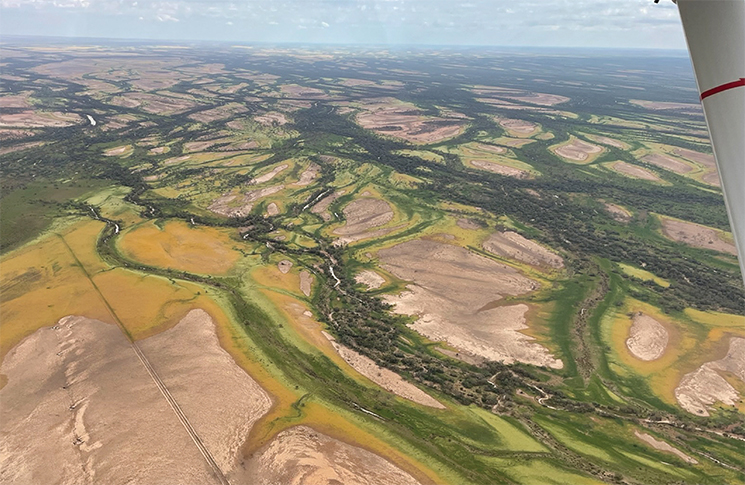
This is particularly helpful in many areas around Australia where there are multiple CTAFs in close proximity to one another all sharing the same radio frequency. Example: Gulf of Carpentaria coast where we routinely hear lots of calls from aircraft inbound or outbound at Normanton, Burketown, Karumba, Kowanyama and Pormpuraaw, all of which require careful attention to the location stated so we can determine which operations are of consequence to our flight.
The ‘numbers’ channel, 123.45 MHz, is designated in the AIP as the air-to-air VHF communications channel.
Tip: It’s not a chat channel for discussion with your mates about the awesome fuel consumption you just got on your last leg.
Remember the radio frequency rule that catches a lot of pilots out: ‘When operating at aerodromes not depicted on aeronautical charts, pilots should monitor and broadcast their intentions on the relevant Area VHF.’ So, let’s all read from the same song book here – if the aerodrome isn’t on the Airservices chart, use Area VHF! Check that out before you go flying. If everyone sticks to this rule, it means we all get a picture of the local traffic and are at least talking to each other.
If you have 2 comms, always monitor the Area frequency as well as the local frequency. You don’t know when ATC might be trying to contact you.
Be smart about using your radio! Well placed calls can make the difference between mayhem and relaxed order in a multi-aircraft environment.
Reliance on technology can creep up on you, which is unsurprising if you use it all the time.
3. Over-reliance on technology
We all know how reassuring that unwavering magenta track is on our GPS or EFB screen. But there’s a lot of us out there potentially flying along the same track if it’s between 2 popular waypoints. Despite hemispherical rules, I still feel like I’ve got a target on my back sometimes, so I fly a mile or 2 to the right of track. Eases the blood pressure.
But let’s just say that bright shiny GPS or EFB screen suddenly turned very black, mid-flight. There’s a good chance you’d know vaguely where you are, but that’s not really good enough in this game. Reliance on technology can creep up on you, which is unsurprising if you use it all the time. Don’t get me wrong – use all the technology that’s going, but at the very least, keep a flight log – position fixes on your map and waypoint times on your flight plan – and factor in lots of redundancy. Use paper charts as a backup and practise map-to-ground and ground-to-map techniques.
4. Nav over featureless terrain
Featureless terrain and non-controlled airspace often go hand in hand. It doesn’t get much more sparse than the Simpson Desert, but it’s comforting to know that, even though you are out of controlled airspace, you are never on your own. You can always call ATC on the area frequency for assistance.
Tip: If you’re flying low or reception is poor, try contacting any other aircraft on the frequency for help. Their higher altitude may enable them to pass on a request to ATC for you. I have yet to experience anything but a helpful reply in these situations. If there’s a separate frequency for Flightwatch, use it.
There are a few reasons why it pays to fly high out here: it improves the radio range for comms with ATC, provides a better vantage point for picking out landmarks, and it’s more economical for fuel consumption.
If you have 2 comms, always monitor the Area frequency as well as the local frequency.
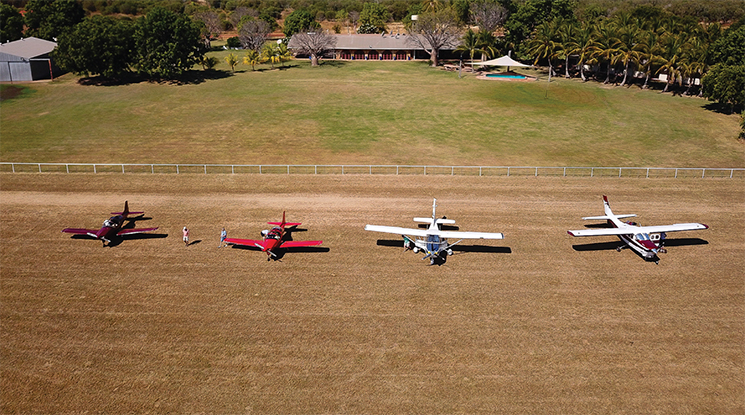
5. Fleet flying
When you’re on a flyaway with friends, there’s usually a lot of non-controlled airspace involved. It doesn’t matter whether you’re in a fleet of 2 aircraft or 10, these tips should help you keep those friendships well into happy hour:
- Do all your own homework. By all means listen, but don’t follow others’ plans just because they’re the loudest and they look terrifyingly confident.
- Make your own weather assessment before you hit the breakfast table. Your comfort in the air today will be all about your personal minima.
- Organise a logical order of departure, depending upon aircraft speed. Fastest first. Why? It reduces overtaking when you’re all on the same GPS track or magenta line and spreads out the arrivals at your destination.
- Talk about using different altitude levels for the various aircraft on each leg.
- Before departure, confirm everyone has the same destination frequency noted.
- Do not be intimidated by aircraft behind you. You have right of way.
This is the best country in the world for light aircraft flying. Put the work in, get it right and you’ll be rewarded in spades. If you’re anything like me, you’ll learn something every single time you leave the ground, and isn’t that a good thing.
It’s all a waste of everybody’s time if your transmission is not easily readable.
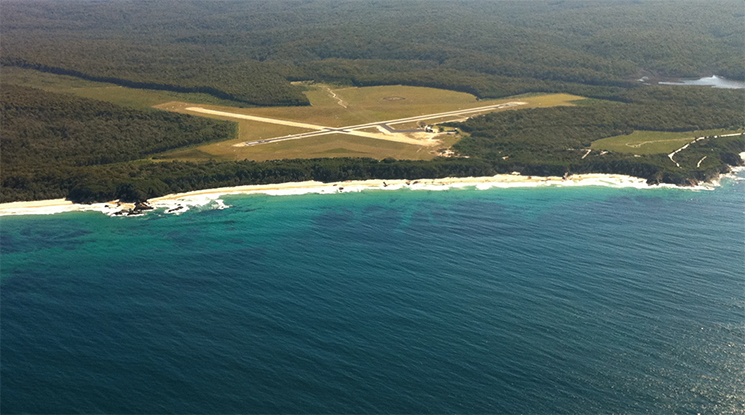
Non-controlled operations
Non-controlled operations is one of the special topics on our Pilot safety hub.


